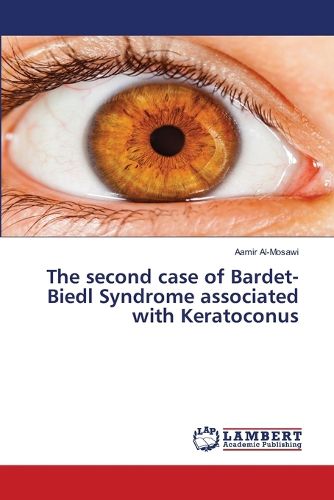Readings Newsletter
Become a Readings Member to make your shopping experience even easier.
Sign in or sign up for free!
You’re not far away from qualifying for FREE standard shipping within Australia
You’ve qualified for FREE standard shipping within Australia
The cart is loading…






Corneal ectasia is a group of progressive disorders characterized by thinning and protrusion of the cornea, which includes conditions such as keratoconus, keratoglobus, and pellucid marginal degeneration. Bardet-Biedl syndrome, a rare autosomal recessive genetic disorder, is primarily recognized for its hallmark features, including retinal degeneration leading to progressive vision loss, obesity, polydactyly, and various systemic abnormalities. While ocular manifestations are well-documented in Bardet-Biedl syndrome, the association with corneal ectasia, particularly keratoconus, is exceptionally rare. The first documented case of keratoconus in a patient with Bardet-Biedl syndrome was reported by Francois et al. in 1982. This book highlights the second known case of Bardet-Biedl syndrome associated with keratoconus, shedding new light on the potential systemic involvement of corneal ectasia in this syndrome. In addition, this book explores the latest evidence-based therapies for managing ocular abnormalities in Bardet-Biedl syndrome patients, including advancements in retinitis pigmentosa treatment.
$9.00 standard shipping within Australia
FREE standard shipping within Australia for orders over $100.00
Express & International shipping calculated at checkout
Corneal ectasia is a group of progressive disorders characterized by thinning and protrusion of the cornea, which includes conditions such as keratoconus, keratoglobus, and pellucid marginal degeneration. Bardet-Biedl syndrome, a rare autosomal recessive genetic disorder, is primarily recognized for its hallmark features, including retinal degeneration leading to progressive vision loss, obesity, polydactyly, and various systemic abnormalities. While ocular manifestations are well-documented in Bardet-Biedl syndrome, the association with corneal ectasia, particularly keratoconus, is exceptionally rare. The first documented case of keratoconus in a patient with Bardet-Biedl syndrome was reported by Francois et al. in 1982. This book highlights the second known case of Bardet-Biedl syndrome associated with keratoconus, shedding new light on the potential systemic involvement of corneal ectasia in this syndrome. In addition, this book explores the latest evidence-based therapies for managing ocular abnormalities in Bardet-Biedl syndrome patients, including advancements in retinitis pigmentosa treatment.